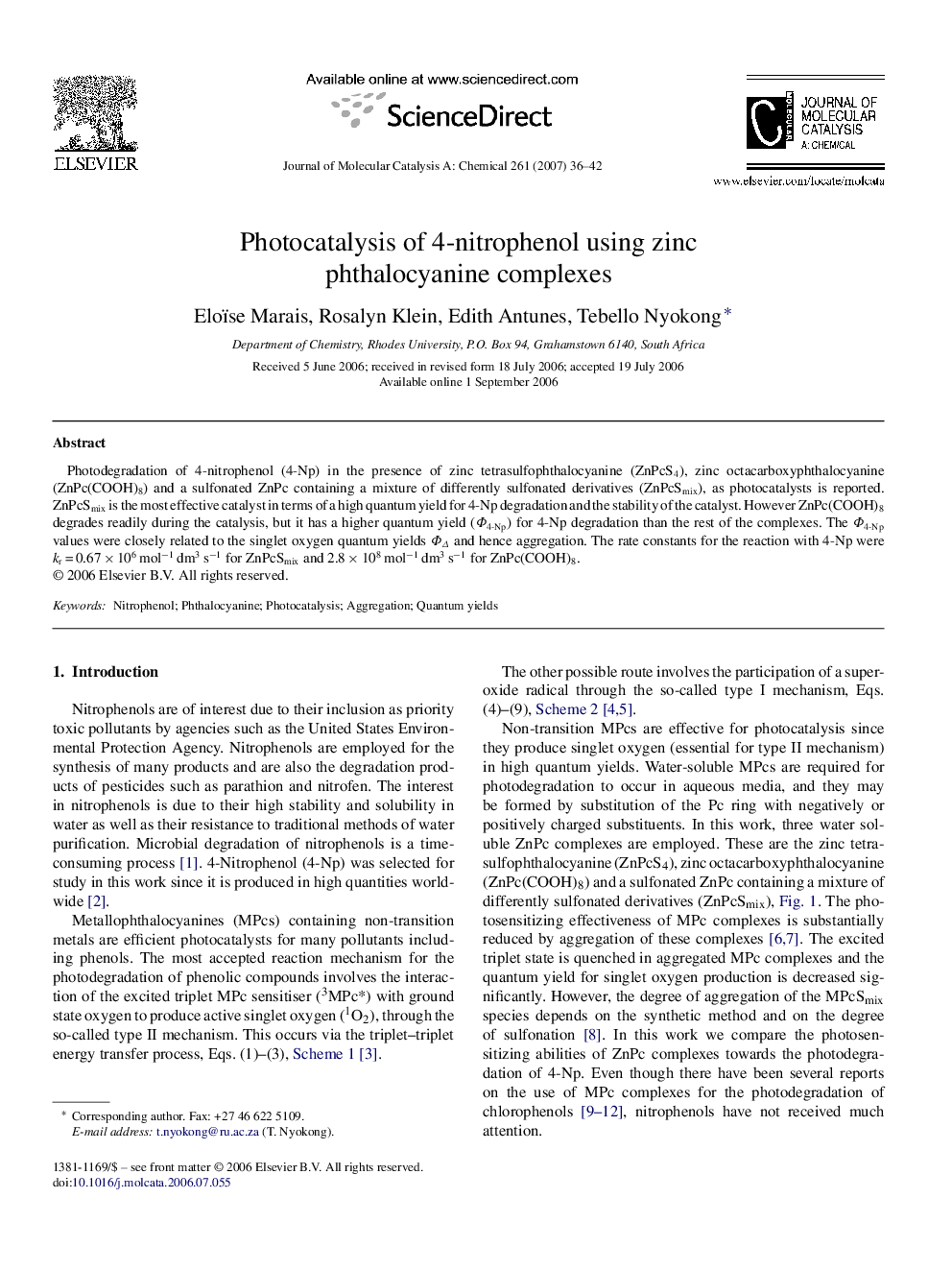| Article ID | Journal | Published Year | Pages | File Type |
|---|---|---|---|---|
| 68257 | Journal of Molecular Catalysis A: Chemical | 2007 | 7 Pages |
Photodegradation of 4-nitrophenol (4-Np) in the presence of zinc tetrasulfophthalocyanine (ZnPcS4), zinc octacarboxyphthalocyanine (ZnPc(COOH)8) and a sulfonated ZnPc containing a mixture of differently sulfonated derivatives (ZnPcSmix), as photocatalysts is reported. ZnPcSmix is the most effective catalyst in terms of a high quantum yield for 4-Np degradation and the stability of the catalyst. However ZnPc(COOH)8 degrades readily during the catalysis, but it has a higher quantum yield (Φ4-Np) for 4-Np degradation than the rest of the complexes. The Φ4-Np values were closely related to the singlet oxygen quantum yields ΦΔ and hence aggregation. The rate constants for the reaction with 4-Np were kr = 0.67 × 106 mol−1 dm3 s−1 for ZnPcSmix and 2.8 × 108 mol−1 dm3 s−1 for ZnPc(COOH)8.
Graphical abstractZnPcSmix containing a mixture of sulfonated ZnPc complexes is a favourable catalyst for the transformation of 4-Np to hydroquinone and 4-nitrocatechol, since it is stable, whereas ZnPc(COOH)8 degrades readily during the catalysis, and tetrasulfonated ZnPcS4 is an ineffective catalyst. Figure optionsDownload full-size imageDownload as PowerPoint slide
